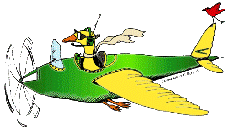Bird Strike Committee Proceedings
Date of this Version
October 2002
Abstract
ICAO Bird Information System (IBIS) has been conduced at Panama airports since 1996. Bird strike notifications, technical reports as well as wildlife control procedures have been developing as essential roles of the National Bird Hazard Committee and its Wildlife Limitation Programs. Sixty-four (64) bird strikes with different aircraft were recorded and sent to ICAO so far, while an additional 154 collisions (71%) were not reported to ICAO because of the failure to determine the aircraft involved. Among the birds struck at airports, the most outstanding species are the common barn owl (Tyto alba) and the black vulture (Coragyps atratus). One black vulture was responsible for the first air crash in Panama, on 27 January 2000, which resulted in two human fatalities. Other important large bird species are the turkey vulture (Cathartes aura), the crested caracara (Polyborus plancus) and the great egret (Casmerodius albus). Considering the large numbers of birds near the airports, especially during the raptor migration period, the incidence of bird impacts would be much greater, mostly during the rainy season. The wildlife control programs at the principal international airports are established through the Bird Hazard Airport Committees. Bird dispersal methods used include pyrotechnics (shot-launchers and local fireworks) and gas cannons. Removal methods include toxicants such as rodenticides and insecticides, and firearms (mostly .22 caliber rifles and pellets air rifles).

